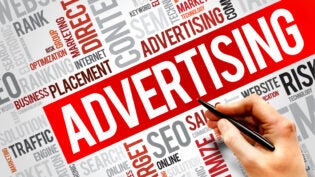
Let’s begin by defining what inbound marketing is at a basic level. At its core, inbound marketing is marketing that is focused on getting found. This is in contrast to traditional “outbound” marketing, which aims to find customers and interrupt people. Common outbound marketing techniques include cold-calling, print advertising, T.V. advertising, junk mail, spam, and trade shows.
As technology advances and people are finding more ways to avoid or block ads, outbound methods are losing their effectiveness. Think about it, if you do not want to see an ad on television, you can simply record the show, watch it later, and fast-forward through the commercials. You can also download AdBlock Plus to avoid Internet banner ads. Lastly, most emails today have built-in SPAM filters, so mass emails aren’t nearly as effective as they might have been in the past.
According to Mashable, customers are barely even paying attention to paid ads anymore. In fact, 44 percent of direct mail is never opened! Nearly 90 percent of people skip through television commercials or change the channel, and the cost per lead in outbound marketing is far more than inbound marketing.
Related Article: How IBM Used Inbound Marketing to Thrive in the Digital Age
The truth is, consumers would rather not be disrupted, even if the ad might benefit them in some way. Given today’s ubiquitous technology, consumers will find some way to block ads. It’s certainly still possible to get a message out using traditional outbound methods, but it’s costly and no longer very effective, especially if you’re targeting online consumers.
Inbound marketing takes a much different approach than outbound. Instead of disrupting consumers with ads, Inbound Marketers create content such as videos, blogs, ebooks, or whitepapers for potential customers to learn from and, hopefully, inspire them to call and look for more information. Inbound marketing refers to marketing that brings visitors in, rather than having to reach out to get prospects’ attention. The inbound process earns the customer’s attention, makes the company easy to find, and draws customers to websites with interesting content.
A successful inbound marketing campaign has three parts:
- Content – Content Creation is the backbone of any inbound campaign. Content is the information that draws prospects into your company’s website. Not only that, according to Hubspot, blogging increases your traffic by up to 55 percent. A whopping 400 percent more indexed pages are created by blogging too, which means more opportunities for you to be found in search engines. Content should be informative, engaging, and appealing to your targeted customers. The more appealing it is, the faster you will see your website’s traffic increase.
- SEO – SEO stands for search engine optimization. It refers to the strategies and techniques used to increase a website’s visitors by obtaining a high-ranking placement in the search results page of a search engine such as Bing, Google, or Yahoo. SEO increases your chances of being found by making your website search engine friendly. As I wrote above, inbound marketing is all about getting found online, and SEO is a big help in that regard because it allows you to guide search engines in how they index your site and how it ranks when related searches are executed.
- Social Media – Social Media is another low-cost method for increasing your exposure online. If your content is being discussed by people online, it gains legitimacy and draws in qualified customers to your website. Sharing your content with like-minded people will drive traffic to your website. Think of it this way: outbound marketing was a one-way conversation, but inbound is a two-way conversation facilitated by social media.
These are the three most important components to a successful Inbound Marketing campaign. If these three things are working in conjunctions, it is highly likely that your website will attract customers. However, these three components only scratch the surface of Inbound Strategy. Overall, inbound marketing is a low-cost, targeted response to the now outdated and largely ineffective outbound marketing methods of the past.
This article was originally published by SyneCore
Published: April 6, 2015
2690 Views
2690 Views












